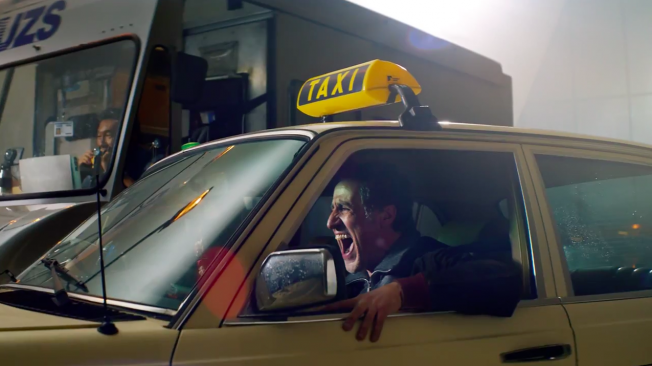
One day, all the world's persistent infrastructure problems will be obsolete, says Cisco. Indeed, you'll only be able to see them in museums.
That's the theme of "Building Tomorrow Today," a new Cisco campaign by Goodby, Silverstein & Partners that begins today with "The Last Traffic Jam," a striking 30-second spot that shows a traffic jam—now a remnant of the past—as an art piece in a gallery.
Future ads will depict other "last" scenarios, including the last long checkout line and the last product recall, as frozen moments from the past that are now displayed in an art gallery.
GSP creative directors Justin Moore and Nick Klinkert spoke to AdFreak about the "The Last Traffic Jam":
AdFreak: This is a clever idea. How did you arrive at this concept of a Museum of Lasts?
Moore: People talk a lot about 'firsts' in tech. So we loved the idea that "lasts" can represent a more interesting view of the future—a way of showing how the Internet of everything can have a real, positive impact on people's lives. After we got to the idea of "lasts," the museum concept felt like a pretty short leap.
Klinkert: Research found that business and technology leaders feel more and more responsibility to solve exceedingly complex problems in the world, with the help of technology. The ultimate goal is to confine these problems that affect us all to the past. The team quite quickly became interested in a place where all these problems could live—"the Museum of Lasts."
Where did you film this, and what were the production challenges?
Klinkert: We shot these in Zaragoza, Spain. They built these massive, beautiful buildings for the water expo in 2008, and they gave us the scale and the look that we were after. The "art installations" are actually real people standing very still (and treated in post) to replicate hyperrealistic statues of people.
Can you tell me about the visual look?
Moore: We wanted to make the point that technology is ultimately about people. So we spent a lot of time looking at the work of artists like Ron Mueck and researching how modern museums create exhibitions.
Klinkert: Visually, we were interested and inspired by the amazing, hyperreal sculptures of Sam Jinks and Ron Mueck, and the way large-scale installations in museums work these days. A lot of them have an interactive component to them, a lot of them are playing with relative size, and they are very fascinating to look at.
Did you storyboard exactly how the tableaux would look, almost like doing little paintings?
Klinkert: We had a pretty clear idea of how it would look at first, but a lot of exploration went into the final execution of it. The traffic jam is obviously a universal problem that affects a lot of people. We wanted to illustrate the frustration, impatience and the boredom of the people in the traffic jam. We toyed around with a lot of other ideas, but at the end of the day we wanted it to look as if an artist picked up a chunk of congested freeway in a major metropolitan city and put it in an elegant museum space.
Why the British voiceover?
Moore: We're just looking for something fresh and interesting. We tried lots of voices. But something about the English accent seemed to suit the cadence of the words.
How does this evolve the Cisco campaign from last year's work?
Moore: Strategically, we've got a sharper point of view on what Cisco's vision is for the future, and how it relates to what they're doing right now. Creatively, the campaign's just getting better and better.
Klinkert: It's really a creative expression of what they are doing right now—Cisco is helping to make the Internet of everything possible. And with that, hopefully we can see the last traffic jam or the last product recall in the not too distant future.